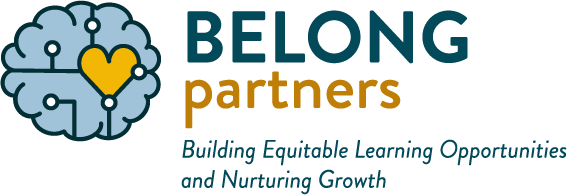There is now clear evidence that children learn better when they sense that they are part of a learning community that is safe and respectful. Learning how to participate and contribute to the classroom community is a big part of what builds their skills to be resourceful, respectful and responsible citizens of the larger world as they become adults. When students are taught to apply their energies in a way that is socially useful, in ways that make their part of the world a better place, they develop a deep sense that they are capable and that their contributions matter. A classroom environment that provides these opportunities does not just happen. You build it carefully. You may want to use the list below as a checklist for what you have done, or a place to start now one step at a time. Here are places to begin:
Structures for safety:
- Clear routines that are practiced regularly.
- Classroom agreements (instead of rules) that are co-generated with students. Some classrooms call this the “classroom charter”. Refer to this regularly so that it stays alive. “How are we doing on our agreement to _____?” (Thumbs up/sideways/down). “What can you do to make it better right now?”
- Teach self-regulation. Students feel safer when the classroom tone is regulated. Not all students come to school with the ability to manage their stress. Regular practice, teaching “the brain in the hand” and modeling self-regulation help students grow the parts of their brain that can keep them focused on the work at hand. The picture below was done by Ms. Isakson, a third-grade teacher, as her students learned about their brains.
- Model and teach that mistakes are opportunities to learn. This is not the message that all students bring with them to school. Students need to be able to make mistakes and take risks to be able to learn well.

- Avoid any shaming or public put-downs. This applies to what you say, what you do and your tone of voice. Avoid tracking inappropriate behavior publicly. This increases stress levels for all students.
Create connections teacher to student and student to student:
- Get to know your students. You know how to do this and it is easier for some of us than others. You can have lunch with small groups, use interactive journal writing, or create situations where students can share more about their own lives and cultures.
- Help them know each other. You do this already through pair sharing, seating arrangements and small group work. How might that expand?
- Challenge curiosity. When we are curious about the world and each other, we grow connections and compassion. It is the foundation of becoming a self-motivated learner. Begin to use the word curiosity in different kinds of lessons. “What might this character be wondering or be curious about?” “Before we start learning about (the ocean, spiders, Latin America) what are you curious about?”
- Use class meetings. Positive Discipline class meetings start with compliments. With practice the compliments become richer and students begin to appreciate each other and build better connections.
Expand opportunities to contribute.
- Classroom jobs. Make sure students have social responsibility within the classroom. Create a structure for jobs and rotating jobs. Think broadly. Do you have a welcomer who introduces each guest? Do you have a class “medic” in charge of the bandaids? Older students can write job descriptions and “train” each other.
- Teach problem solving and create a space for problem solving in the classroom. The ability to navigate small problems improves a child’s sense of agency and transfers to solving academic problems as well. Simple tools include using Bugs and Wishes and the Four Problem Solving Steps.
- Use class meetings to solve problems that students experience in and out of the classroom. When students solve problems together they grow their sense of “we are capable.”
- Welcome differences and student voice. Once students are skilled at being respectful to each other, create an “opinion continuum”. Read a statement expressing a certain opinion then have students choose from: I strongly agree/I agree/I’m not sure/I disagree/I strongly disagree. Invite students to explain and discuss.
- Engage the bigger world. Invite the class to do a community service project. What can they do to improve the school or larger community? Ideas include: recycling program, playground cleanup, penny drive, plan a field trip for a younger class. Planning and executing the project as well as reflecting on the experience allows students to see themselves as part of a team and a bigger community.
Resources: For lessons plans to teach setting classroom guidelines, self-regulation, classroom routines, jobs, problem solving and class meetings we recommend Positive Discipline in the School and Classroom Teachers’ Guide: Activities for Students. It is available at PositiveDiscipline.com
